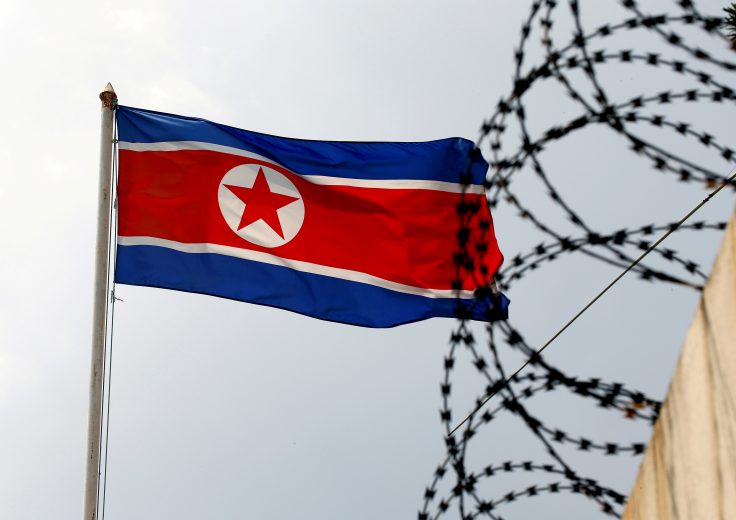By Hyonhee Shin, Josh Smith and Kantaro Komiya
SEOUL/TOKYO (Reuters)—Nuclear-armed North Korea test-fired a ballistic missile farther than ever before on Tuesday, sending it soaring over Japan, for the first time in five years, and prompting a warning for residents there to take cover.
It was the first North Korean missile to follow such a trajectory since 2017, and its estimated 4,600 km (2,850 mile) range was the longest traveled by a North Korean test missile, which are usually "lofted" high into space to avoid flying over neighboring countries.
In response to the test, U.S. and South Korean warplanes practiced bombing a target in the Yellow Sea and Japan warned its citizens to take cover and suspended some train services while the missile passed over its north before falling into the Pacific Ocean.
It was the latest in an escalating cycle of muscle flexing in the region. A U.S. aircraft carrier made a port call in South Korea for the first time since 2018 on Sept. 23, and North Korea has conducted five launches in the last 10 days.
The period has also seen joint drills by the United States, South Korea, and Japan, and a visit to the region by U.S. Vice President Kamala Harris, who stood at the fortified border between the Koreas and accused the North of undermining security.
North Korea accuses the United States and its allies of threatening it with exercises and defense buildups.
Recent tests have drawn relatively muted responses from Washington, which is focused on the war in Ukraine as well as other domestic and foreign crises, but the U.S. military has stepped up displays of force in the region.
In the U.S. and South Korean response to the North's test on Tuesday, a South Korean air force F-15K jet dropped a pair of guided bombs on a target off its west coast, in what South Korea's military called a demonstration of precision strike capability against the source of North Korean provocations.
Japan said it took no steps to shoot the missile down but Defence Minister Yasukazu Hamada said it would not rule out any options, including counterattack capabilities, as it looks to strengthen its defenses in the face of repeated missile launches from North Korea.
South Korea also said it would boost its military and increase allied cooperation.
The United States condemned North Korea's "dangerous and reckless" launch.
"This action is destabilizing and shows the DPRK's blatant disregard for United Nations Security Council resolutions and international safety norms," National Security Council spokesperson Adrienne Watson said in a statement, using the initials of North Korea's official name.
U.S. Secretary of State Antony Blinken held phone calls with his South Korean and Japanese counterparts during which they "strongly condemned" the test. The launch violates U.N. Security Council resolutions, which have imposed sanctions over North Korea's nuclear and missile programs.
"We're still doing some analysis on it so we can better understand what capabilities they put in the air yesterday," White House national security spokesman John Kirby said in a Fox News interview Tuesday morning.
'REAL-WORLD' TEST
Officials in Tokyo and Seoul said the missile flew 4,500 to 4,600 km (2,850 miles) to a maximum altitude of about 1,000 km.
South Korea's Joint Chiefs of Staff (JCS) said it appeared to have been an intermediate-range ballistic missile (IRBM) launched from North Korea's Jagang Province. North Korea has launched several recent tests from there, including multiple missiles that it said were "hypersonic".
The initial details suggested the missile may have been the Hwasong-12 IRBM, which North Korea unveiled in 2017 as part of what it said was a plan to strike U.S. military bases in Guam, said Kim Dong-yup, a former South Korea Navy officer who teaches at Kyungnam University.
The Hwasong-12 was used in 2017 tests that overflew Japan, and Kim noted it was also test fired from Jagang in January.
Flying a missile such a long distance allows North Korea's scientists to test under more realistic conditions, said Ankit Panda of the U.S.-based Carnegie Endowment for International Peace.
"Compared to the usual highly lofted trajectory, this allows them to expose a long-range reentry vehicle to thermal loads and atmospheric reentry stresses that are more representative of the conditions they'd endure in real-world use," he said.
'NOT PRODUCTIVE'
South Korean President Yoon Suk-yeol called the test "reckless" and said it would bring a decisive response from his country, its allies, and the international community.
Speaking to reporters in Tokyo, Japanese Prime Minister Fumio Kishida called North Korea's action "barbaric".
The launch over Japan was "not a productive path forward" but Washington remained open to talks, Daniel Kritenbrink, the top U.S. diplomat for East Asia, said during an online event hosted by the Institute for Korean-American Studies.
South Korea's defense minister, Lee Jong-sup, told parliament the North had completed preparations for a nuclear test and if there was a test, he said, it might use a smaller weapon meant for operational use, or a device with a higher yield than in previous tests.
Lee said it was difficult to predict when North Korea would conduct its seventh nuclear test, but lawmakers briefed by intelligence officials last week said a window could be between China's Communist Party Congress this month and U.S. mid-term elections in November.
Kritenbrink said a nuclear test was "likely awaiting a political decision", warning such a "dangerous" act would represent "a grave escalation that would seriously threaten regional and international stability and security".
(Reporting by Hyonhee Shin and Josh Smith in Seoul, and Chang-Ran Kim and Kantaro Komiya in Tokyo; Additional reporting by Susan Heavey in Washington; Writing by Josh Smith; Editing by Leslie Adler, Chris Reese, Lincoln Feast, and Gerry Doyle)
